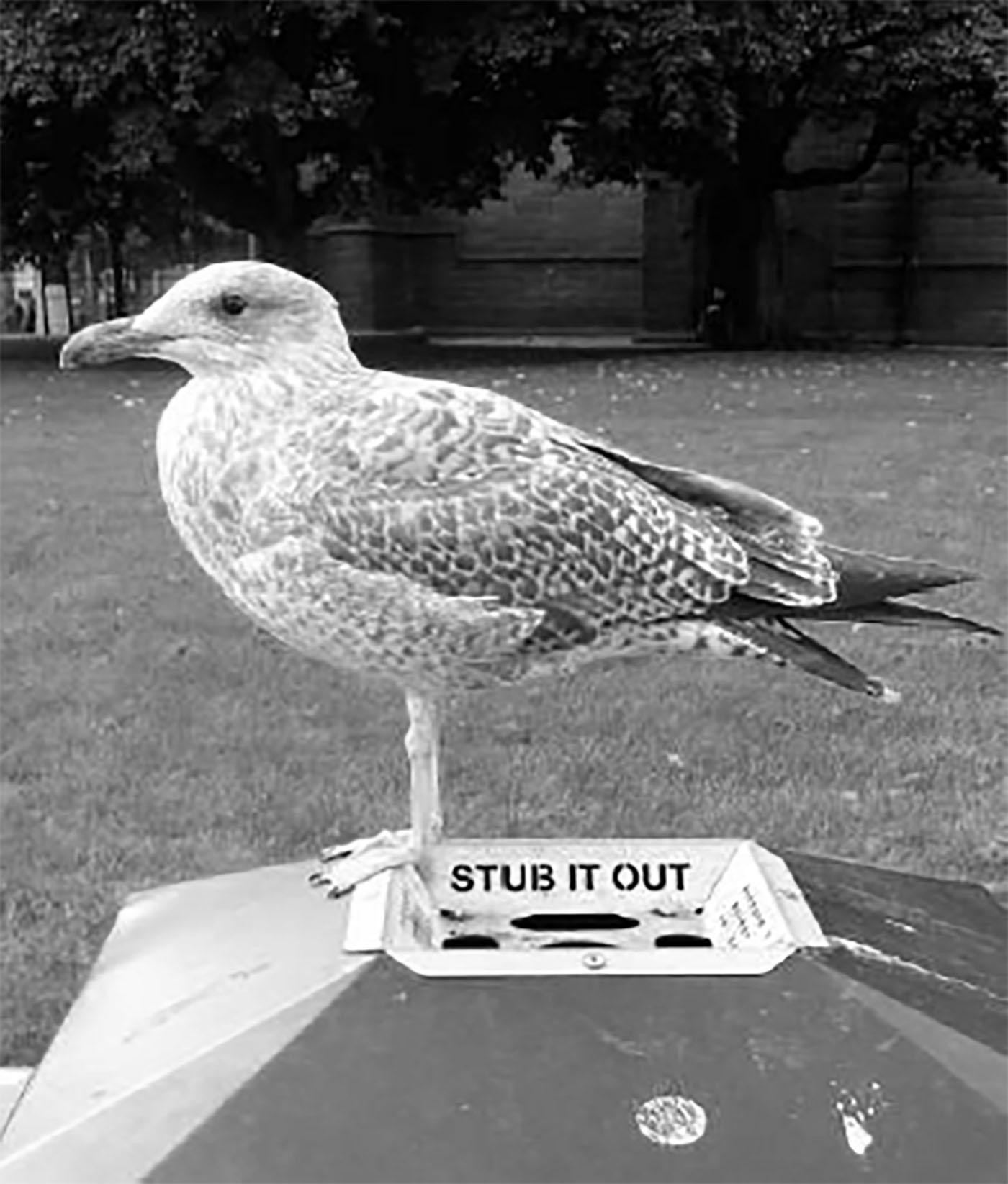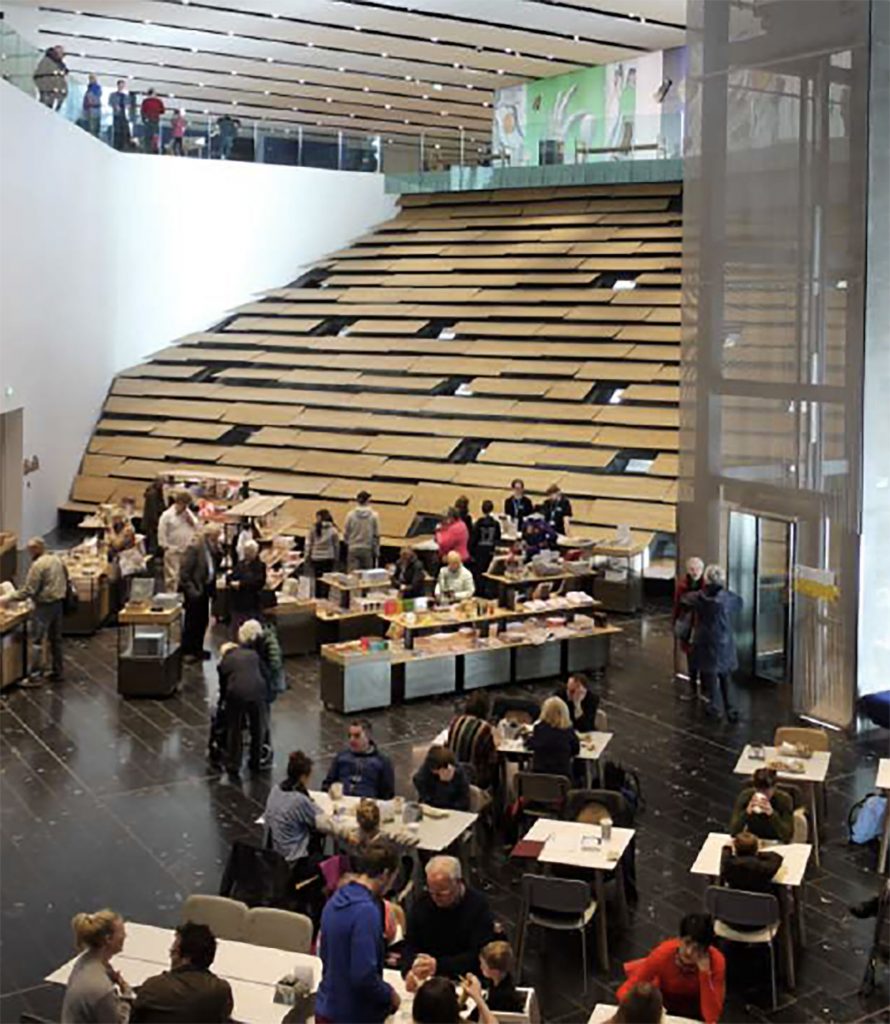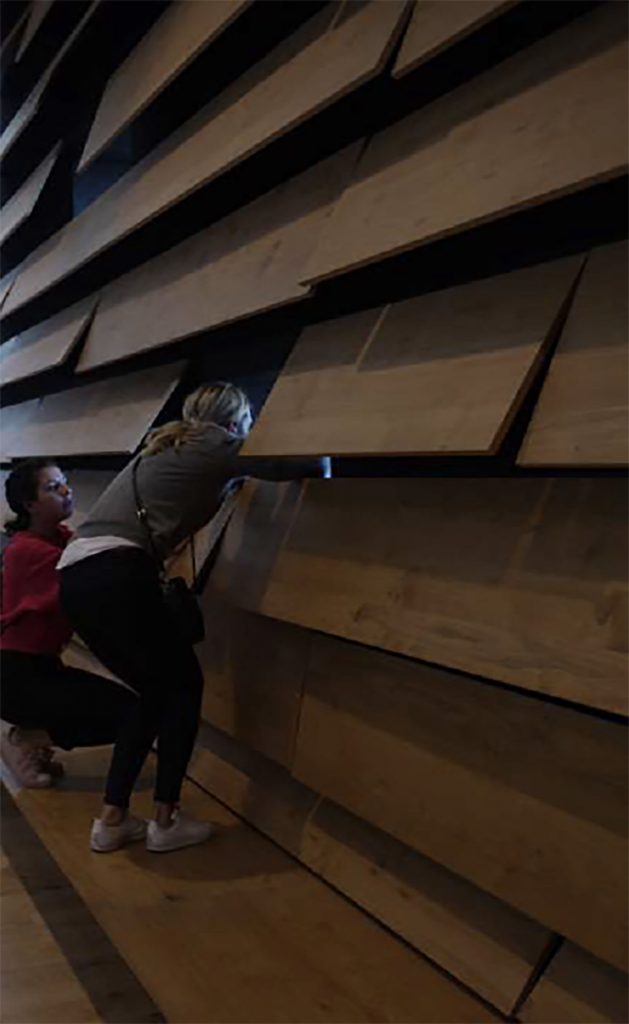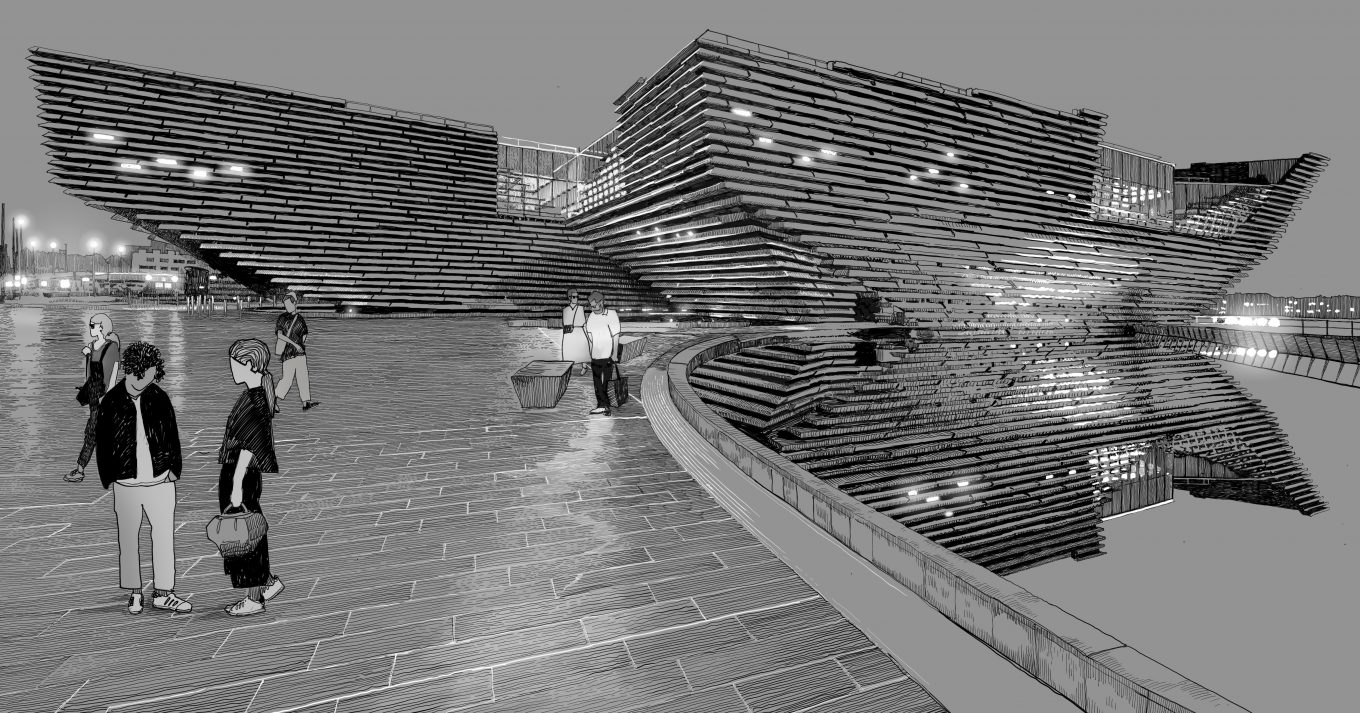Having travelled from Perth to visit the V&A in Dundee the question C. Gull poses this month is ‘Why choose a Japanese architect to design a museum dedicated to Scottish design?’
 First impressions are not promising – it looks like a U boat pen: monolithic, featureless and windowless. I walk towards the huge gash in the façade which I take to be the entrance, my mistake; this is the entrance for staff, who appear to enjoy excellent views over the Tay estuary.
First impressions are not promising – it looks like a U boat pen: monolithic, featureless and windowless. I walk towards the huge gash in the façade which I take to be the entrance, my mistake; this is the entrance for staff, who appear to enjoy excellent views over the Tay estuary.

A little further on I find a wind tunnel through the building and finally here it is, the visitor entrance, a smaller gash – too small, at present, for the number of those curious to see what the inside of a U-boat pen looks like.
Inside the gloomy cave I find myself in a vast void that holds a reception desk, a cafeteria, a shop, a vertiginous staircase and a queue for the lift. The outward sloping walls eat up half the potential floor space and are covered in wooden tiles, some of which appear to have gone missing.

In the shop I can buy a print of a pencil sketch by Kengo Kuma showing his ‘sea cliffs’ concept for the building, even if these cliffs are 300 miles away in Orkney. It does however explain the cave motif and the perches for gulls all round the building. What is less clear is why he chose to block out the view of the entire Tay Estuary with that slanted wall of wooden floor tiles.
There is a small triangular window from which a lucky few people can enjoy one of the finest coastal views in Scotland provided they are prepared to squat. Alternatively if you are small you may be able to see through a few letterbox portholes on the stairs. At the top you might even get a view from the roof terraces, although on my visit they were closed for repairs with polite notices encouraging us to ‘enjoy the rest of the museum’.

The primary function of a museum is to store, exhibit and interpret objects for the public. We can forgive V&A Dundee for not being able to store objects, for it has the permanent collection of the Victoria and Albert Museum in London to draw on, but can we forgive it for only having two exhibition halls? When the pay-to-view show ends, there will only be the Scottish Design Hall to look at while the changeover to the next over-priced travelling exhibition occurs.
This includes yet another Mackintosh interior, a rejected model of the Dundee Maggie’s centre by well-known Scottish architect Frank Gehry (ok, Canadian) and a drawing of that triumph of town planning, Hutchesonstown C in Glasgow’s Gorbals, demolished in 1993. After all this excitement you will need a coffee. You can at least see out of the top floor restaurant and there are lots of free seats (largely because they stopped serving coffee at 11am). I am back in Perth in time for lunch.
The museum is keen to point out that it has other functions besides exhibiting and interpreting objects – providing workshops for children and resident designers; research facilities for academics, restaurant and shopping opportunities for tourists, and perhaps most important of all, providing a potent symbol of the city’s regeneration.
There is much to applaud in the vision for the V&A in Dundee as a ‘A Living Room for the City’. It is great that they have placed education at the centre of it all and have realised that it is only by exciting children with the possibilities of design that Scotland can ensure its’ future as an exporting nation. We need to be looking for the next Ian Callum, Richard Murphy and Holly Fulton amongst the kids who will be bussed to the museum for workshops or get involved in the outreach programmes.

As I mellow out with Scotland’s greatest export in my hotel, I can even begin to see the point of hiring Kengo Kuma to design the V&A, and it has nothing to do with Charles Rennie Mackintosh’s admiration for Japanese design, or Kuma’s appreciation of Scottish geology. Does the building twist on its’ axis in imitation of Mackintosh’s serpentine line? – Tosh! Does it look like a Japanese sampan or a roost for gannets? – Who cares! The point is that he could have made it look like Dundee’s own Desperate Dan’s Cow Pie. This is iconic architecture first; sensible, efficient, well-lit museum very much second. Its’ outlandishness will cause people to flock to see it and argue about its’ merits for years to come. In short, it will make Dundee the world’s living room, which is perhaps the point.
C. Gull






